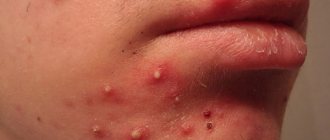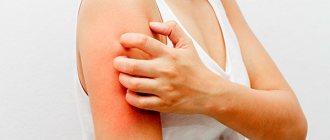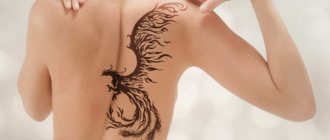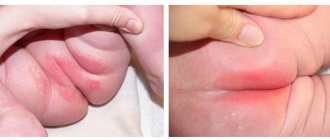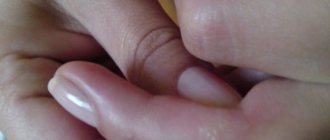It is known that you cannot take antibiotics without a doctor’s prescription. These are powerful medications that kill bacteria and prevent the development of severe complications. Thanks to them, humanity has managed to defeat many dangerous diseases. However, it is important to know that antibacterial drugs bring not only benefits, but also harm to the body. In the fight against pathogenic agents, they also destroy beneficial microflora.
Do you have acne on your face after taking antibiotics? This is one of the possible side effects of antibiotic therapy. Find out why skin rashes occur and how to get rid of them.
What is the cause of acne?
The phenomenon has been studied for many years and today experts have been able to identify several factors responsible for the development of the disease. Genetic predisposition and hormonal imbalance - these reasons are well known to us. But experts name several more important factors: overactivity of the sebaceous glands, which causes excessive secretion of sebum, and an increase in the number of propionbacteria acne, which aggravates hyperkeratosis. This, in turn, becomes one of the causes of blockage of the ducts of the sebaceous glands.
The appearance of skin rashes can also be caused by poor diet, stress, and improper care.
Aggressive cosmetics, including comedogenic cosmetics, block pores and create favorable conditions for exacerbation of acne. The process begins with dead skin cells remaining on the surface and accumulating in the pores, clogging them. As a result, an oxygen-free space is created - an ideal environment for the proliferation of anaerobic bacteria. They multiply rapidly, skin pores enlarge, and inflammation begins.
The term “acne” currently refers to an etiologically heterogeneous group of lesions of the sebaceous glands of an obstructive and inflammatory nature. The modern understanding of the pathogenesis of this disease is based on the interaction of four main factors - excessive formation of sebum, follicular hyperkeratosis of the pilosebaceous follicles, colonization by opportunistic microflora with the subsequent development of inflammation.
Hypertrophy and hyperproduction of the sebaceous glands, which occurs under the influence of neurogenic and endocrine factors, against the background of hyperkeratosis of the mouths of the sebaceous follicles, create conditions that prevent the normal outflow of sebum and lead to the formation of microcomedones with subsequent occlusion of the sebaceous glands. This creates favorable conditions for the reproduction of resident microflora - Propionibacterium acnes
, epidermal staphylococci, etc.
The pathogenetic significance of increased growth and reproduction of various microorganisms in acne lies not only in the direct destruction of tissue and the launch of a cascade of immune reactions, which results in the development of inflammation, but also in their lipolytic activity. Bacterial lipase releases free fatty acids in the sebaceous gland, which have a toxic effect and lead to spongiosis and subsequent perforation of the walls of the sebaceous glands and their excretory ducts. This effect is also enhanced by proteolytic enzymes synthesized by microorganisms [1].
The development of a pronounced inflammatory reaction in acne is facilitated by both the presence of pathogenic microorganisms and the entry into the surrounding tissues of sebaceous gland detritus, rejected cells of the stratum corneum, free fatty acids formed during the life of microorganisms and released as a result of ruptures of the walls of the sebaceous glands. In this case, free fatty acids are considered the most reactogenic [1].
In the pathogenesis of acne, especially those accompanied by the appearance of a large number of inflammatory elements, Propionibacterium acnes
. These microorganisms are lipophilic anaerobes and colonize deep in the follicular canal. The basis of their pathogenic effects is the formation of fatty acids that have a pronounced pro-inflammatory effect. Other representatives of the pathogenic flora are located more superficially - mainly in the upper sections of the excretory ducts of the sebaceous glands and, despite the presence of lipolytic activity, are not direct etiological agents leading to the development of acne, but support and intensify inflammation in the skin [2].
Currently, there are a large number of medications, as well as non-drug agents, for the treatment of acne. In the treatment of this dermatosis, medications are used, both for local use and for systemic exposure.
In local acne therapy, topical preparations of retinoids and their analogues, benzoyl peroxide, azelaic acid and antibiotics are most often used.
Antibiotics have long been used for local treatment of acne, with the most commonly used drugs based on erythromycin and clindamycin. Their effectiveness in the treatment of acne is associated primarily with antibacterial activity against Propionibacterium acnes
, and, to a lesser extent,
Staphylococcus epidermidis
.
Clindamycin, an antibiotic of the lincosamide group, began to be used to treat infectious diseases caused by S. aureus
, more than 30 years ago [3]. The drug has a wide spectrum of action. The bacteriostatic effect of clindamycin is achieved by binding to the 50S subunit of the ribosomal membrane and suppressing protein synthesis in the microbial cell.
Recently, the scientific world has been paying more and more attention to the problem of the development of resistance, including cross-resistance, to different groups of antibiotics, including in the treatment of acne. The first indications of the lack of sensitivity of flora to antibiotics in patients with this dermatosis were received back in the 60-70s of the 20th century. Erythromycin and clindamycin are most often mentioned in this regard in the scientific literature. However, the results of modern studies demonstrate a fairly high level (more than 66%) of sensitivity of the flora in acne patients to various groups of antibiotics, including clindamycin [4].
It is assumed that the development of bacterial resistance not only to topical forms of erythromycin, but also clindamycin in patients with acne is associated with previous frequent and long-term (more than 6-8 weeks) oral administration of erythromycin, and therefore, before choosing a drug for local therapy, careful collection is necessary medical history to determine data on possible previous therapy with systemic antibiotics.
To study the possibility of effective use of antibiotics in patients with acne on the basis of City Clinical Hospital No. 14 named after. V.G. Korolenko, we conducted our own study aimed at studying the sensitivity to antibiotics of microorganisms obtained by culture in patients with acne.
We observed 40 patients (18 men, 22 women) aged 18–35 years with papulopustular acne of moderate severity, predominantly localized on the facial skin.
To determine the sensitivity of the flora to drugs, a cultural study was carried out. To do this, a pustule localized on the skin of the face was opened with a sterile scarifier, the contents of the pustule were taken with a sterile swab on a plastic stick and placed in a transport system with Amies medium containing activated carbon. The sample was delivered to the laboratory within 48 hours.
To test for anaerobic infection, a sample of material was placed in an anaerobic transport medium without oxygen (BD Port-A-Cul) and used within 2-3 hours or frozen.
To isolate and identify microorganisms, the sample was aseptically removed from the tube and inoculated on blood agar, Sabouraud's medium, and anaerobic growth medium. After 24 hours, microscopy of Gram-stained preparations prepared from the grown cultures was performed. If necessary, pure culture was isolated. From the pure culture, after 24 hours of cultivation, a suspension of microorganisms was prepared, which, in accordance with the microscopy results, was poured into a Crystal apparatus to identify gram-positive, gram-negative and anaerobic microorganisms. The result was taken into account using an automated bacteriological analyzer BD BBL “Crystal” Autoreader.
Sensitivity to antibacterial drugs was determined by the disk diffusion method.
The results of the cultural study indicated that St. saprophyticus, St. epidermidis, St. aureus, Pantoea agglomerans, Enterococcus facealis
and
Proteus inconstans
.
At the same time, Malassezia furfur
and
Propionibacterium acnes
were not cultured, which, in our opinion, is explained by long-term (more than 12 months) previous antibacterial therapy, both systemic and topical.
According to the results of the analysis of the sensitivity of the isolated cultures to the main, most frequently prescribed antibiotics, low sensitivity was noted to lincomycin, erythromycin and doxycycline, and quite high - to clindamycin and gentamicin (see table).
P. inconstans
and
St.
were highly resistant. аureus .
Thus, previously published data, as well as the results of our own studies, indicate the need to conduct a cultural study to determine the antibiotic sensitivity of the skin microflora of acne patients for the subsequent prescription of effective therapy. It is also necessary to take into account the dosage form of topical antibiotics, which is mainly represented by a cream or gel, while a solution is preferable when treating acne.
Currently, a new topical preparation of clindamycin, Zerkalin,
("Jadran", Croatia) in the form of a 1% solution.
The drug is applied 2 times a day to previously cleansed and dried skin. The average course of treatment is 6-8 weeks. If longer-term (up to 6 months) use of Zerkalin
It is advisable to combine it with benzoyl peroxide (
Zerkalin
is applied in the morning, and benzoyl peroxide in the evening).
The appearance of clindamycin in the form of a solution allows expanding the possibilities of selecting treatment for patients with acne.
Do only young people get sick?
Acne most often develops in girls under 25 years of age. But the disease does not go away with age. Moreover, over the years, acne “ideas” become more and more inventive. Purulent nodes, painful phlegmonous acne, deep scars and even potholes appear. There is no point in fighting acne with improvised products bought on the advice of a friend, Instagram or even a pharmacist. There is no guarantee that grandmother’s recipes, tested over the years, will help.
Acne is a personalized disease, that is, it occurs differently for everyone, so treatment must be individualized. Self-medication will aggravate the process and delay it for several years. Only systemic therapy, which is prescribed by a doctor, will help solve the problem, and he also monitors the result and course of the disease.
The harm of antibiotics to the intestines
The term intestinal dysbiosis refers to all diseases in the small intestine that occur due to microflora disturbances. They are accompanied by loss of intestinal cells and an increase in their permeability. The influence of antibiotics on this process is undeniable. Even one dose of an antibiotic can significantly affect the microflora.
In medicine, relatively recently, they began to realize the negative consequences that antibiotics cause, the side effects of which must be minimized immediately. Any antibiotics can change the intestinal flora, but some of them - penicillins, cephalosporins, fluoroquinolones, clindamycin - are a direct cause of antibiotic-associated and pseudomembranous colitis. The first develops under the influence of antibiotics, the second is caused by clostridia bacteria, which rapidly multiply against the background of damaged microflora.
Think about your immune system in time. If antibiotics are essential for you, talk to your doctor about which medications you should take at the same time as antibiotics to restore your levels of beneficial bacteria. This will help minimize the effects of taking antibiotics, and intestinal treatment will not be so long and expensive.
If you are prescribed antibiotic treatment, you need to take preventive measures and undergo a course of probiotic therapy to restore beneficial bacteria that were destroyed during therapy. The most optimal preparations after antibiotics are liquid concentrates of bifidobacteria and lactobacilli Bifidum Bagh and Trilact. In addition to the fact that beneficial bacteria cover the intestines with a continuous protective biofilm, leaving no chance for fungi, they also normalize metabolism and digestion, which reduces bloating, the body quickly cleanses itself of toxins, and improves immunity. To achieve this effect, the number of probiotic bacteria must reach a certain titer. It is generally accepted that a probiotic should contain 10 million colony forming units per gram. For comparison: the liquid probiotic Bifidum Bag contains 10 to 12 power (1000 billion) bacteria, that is, this figure is higher than other probiotic preparations that are prescribed after antibiotics.
At the same time, intestinal dysbiosis is corrected with a diet high in soluble and insoluble fiber and low in saturated fat and animal protein. These reduce the concentration of bacteroids and increase the concentration of bacteria that produce lactic acid: bifidobacteria, lactobacilli and lactic acid streptococci.
Adding fiber to the diet can have different effects on the treatment of dysbiosis. Insoluble fibers reduce the concentration of bacteria and their activity. Soluble fiber, on the other hand, increases bacterial concentrations and enzymatic activity while increasing levels of beneficial short-chain fatty acids. In most cases, you can successfully eliminate mild symptoms of irritable bowel syndrome by learning to manage stress and making diet and lifestyle changes.
How quickly can acne be cured?
Treatment is quite long, because acne is accompanied by periods of remission and exacerbation. You can finally cope in at least six months, or even eight months. The fact is that the skin cell renewal cycle is 28–32 days. During this time, we will not understand how effective the treatment is; at least three layers of skin cells need to be renewed during therapy. If you neglect this condition, you can get a post-acne symptom complex - a large number of rashes, age spots, atrophic and hypertrophic scars, milia (horny cysts of the upper layer of skin).
Diagnostics
To diagnose an allergy to antibiotics and prescribe the necessary treatment, the patient undergoes the following tests:
- blood analysis. If immunoglobulin E is detected in the patient for the drug, the diagnosis is considered confirmed;
- allergy skin tests. In the presence of skin changes, antibiotic intolerance has been proven.
Carrying out skin allergy tests requires compliance with certain conditions. For example, they are not used for patients who have had Stevens-Johnson or Lyell syndrome. The test is carried out only with the consent of the patient, who is informed of the possible risks. If he agrees to carry out this study, the test should be carried out by a specialist who has sufficient experience and has the necessary training to provide emergency medical care in the event of a patient experiencing anaphylactic shock. Allergy tests can only be carried out in medical institutions where there is an intensive care unit.
The research results make it possible to establish a predisposition to an allergic reaction and select other drugs for the patient.
At the Best Clinic multidisciplinary medical center, you can be diagnosed with allergies to develop effective treatment.
Do folk remedies help with acne?
Despite the fact that there are certain clinical recommendations that guide the entire medical world, therapy depends on the form, degree and severity of acne. Simply put, it is strictly individual. For moderate severity, a systemic approach is used: a course of oral antibiotics and external agents - creams - which may contain tetracycline antibiotics.
The form of dermatological talker, which is no-no, but is still used, is irrelevant and ineffective. The mash contains alcohol, and it is known to dry the skin, change the acid-base balance and increase the secretion of subcutaneous sebum, which further provokes inflammation.
Is it possible to do without antibiotics?
In severe cases, treatment may be required from different specialists: not only from a dermatologist, but also from an endocrinologist and gynecologist. Treatment may also include low-dose forms of antibiotics; they are prescribed in dosages that allow the therapy to be extended for several months and to achieve an anti-inflammatory effect rather than an antibacterial one. Depending on the results, the doctor may combine antibiotics with other drugs.
The gold standard for topical acne treatment is a combination of retinol (a form of vitamin A) and the antimicrobial basiron, which is not inherently an antibiotic, but when interacted with the skin in a certain way produces free oxygen that kills P. acnes,
bacteria, since it can only live in an oxygen-free environment.
In some cases, your doctor may prescribe antiparasitic medications. At the discretion of the doctor, oral antibiotics may also be prescribed. And only after this - a competent course of probiotics and bacteriophages to restore the intestinal microflora. Taking probiotics and antibiotics together is not effective!
Link to publication: kiz.ru
How to recognize an allergy to antibiotics?
Allergic reactions to antibiotics are characterized by the following symptoms.
- Anaphylactic shock. It is manifested by laryngeal edema, hyperthermia (increased body temperature), acute itching, cardiac dysfunction and acute hypotension (sharp decrease in blood pressure). Anaphylactic shock occurs quite quickly and requires emergency assistance to the patient, as it can be fatal.
- Serum-like syndrome. It does not occur immediately: its symptoms may appear within 1–3 weeks. Its manifestations: hyperthermia, joint pain, enlarged lymph nodes, and rashes appeared on the skin.
- Drug fever. This symptom, characterized by a high temperature in the patient, can last up to 3 days even after stopping the drug. The difference between drug fever and normal fever is the absence of a rapid heartbeat in the patient.
- Lyell's syndrome. This symptom does not occur so often and is accompanied by the appearance in the patient of blisters with serous contents, which form extensive wounds. Another name for this symptom is toxic epidermal necrolysis.
- Stevens-Johnson syndrome. It manifests itself in inflammation of the patient’s mucous membranes and skin, hyperthermia.
In addition to the symptoms listed above, local skin reactions may also indicate an allergy to antibiotics.
- Photosensitivity (i.e., increased sensitivity to ultraviolet or visible radiation) - is expressed in redness of the skin, accompanied by itching.
- Hives. Reddish spots appear on the patient's body. The affected areas are extensive and there is severe itching.
- Rash. Pimples appear on certain areas of the skin (the rash can affect the entire skin of the patient).
- Quincke's edema. Redness and swelling of a large area of the body. With this symptom, hospitalization is indicated for the patient: if the larynx swells, there is a high risk of suffocation.
The rate of allergy development is influenced by the body's individual reaction to the allergen and the method of taking the antibiotic: orally, intramuscularly or intravenously.
Is it possible to predict a possible allergic reaction?
Significantly increase the risk of allergies to antibiotics:
- heredity;
- features of the constitution (i.e., the totality of individual characteristics of the organism, formed on the basis of hereditary and acquired properties);
- long-term use of drugs in large dosages (injection form);
- multiple repeated courses of the same drug;
- concomitant pathologies (such as HIV, lymphocytic leukemia, etc.);
- allergy to a substance or product of another group of allergens;
- a number of viral infections.

